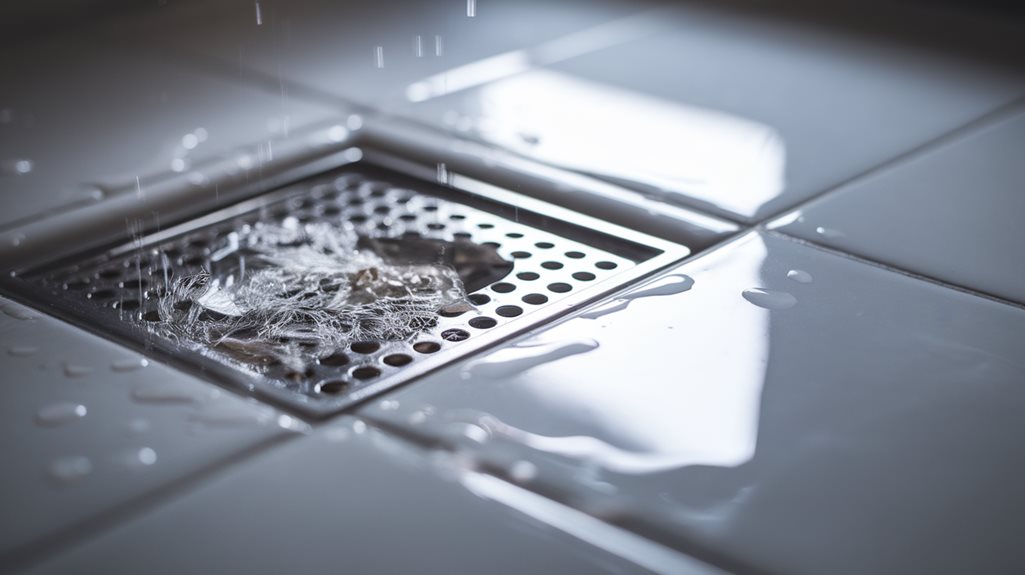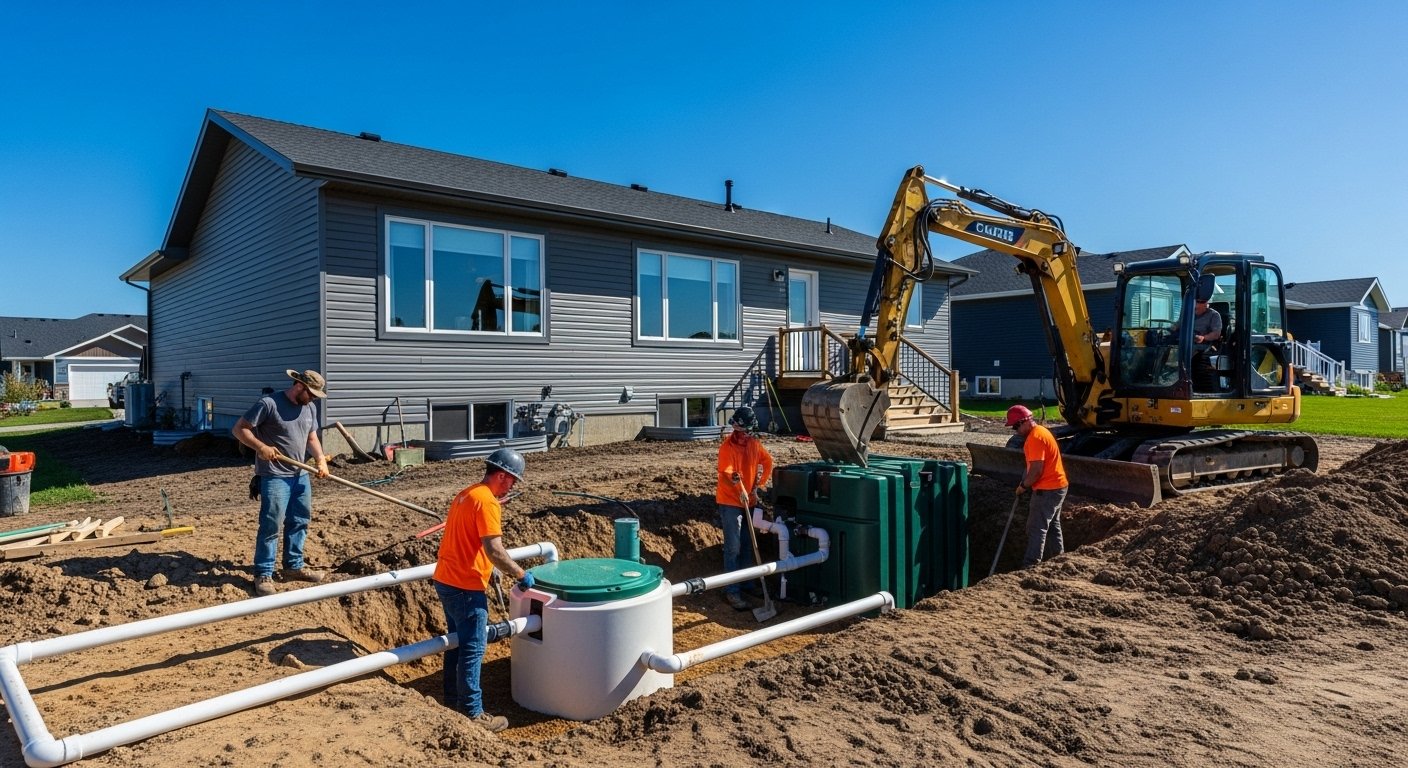

In Grande Prairie, Alberta, septic system installation requires a certified septic specialist, not a plumber. These professionals must hold a Private Sewage System Certificate and understand the region’s unique soil composition and climate challenges. Provincial regulations demand permits, detailed documentation, and compliance with the Alberta Private Sewage Systems Standard of Practice. While plumbers handle indoor water systems, septic specialists possess the specialized knowledge and equipment necessary for this complex outdoor wastewater management.
Thankfully, TMK Plumbing and Heating specializes in both Septic installations and plumbing. When considering who to hire for your next septic installation, consider the following sections to explore the critical distinctions in more detail.
When homeowners face plumbing issues, knowing who to call can save both time and money. The distinction between plumbers and septic system specialists lies primarily in their areas of expertise and required certifications.
Plumbers focus on indoor water systems—handling pipes, fixtures, water heaters, and drain clogs. Their plumbing certifications qualify them to address issues like leaky faucets, toilet repairs, and low water pressure problems.
Septic specialists, however, manage outdoor wastewater systems including septic tanks, drain fields, and leach fields. These professionals possess specific certifications in wastewater treatment and understand wastewater regulations governing septic installations and maintenance. For complex installations, they must consider Alberta’s climate conditions and incorporate proper insulation methods to prevent freezing in subzero temperatures. Regular maintenance services offered by experts ensure the longevity and proper function of septic systems.
While plumbers might perform basic septic maintenance, they typically lack the specialized knowledge required for complete septic system installation or repair, particularly regarding soil conditions and environmental compliance.
The regulatory framework for septic system installation in Alberta stands among the most thorough in Canada, ensuring environmental protection and public health safety. Installation permits require detailed documentation, including System Design Support Documents showing distances to property lines, water sources, and critical structures. Installers must complete mandatory training courses and submit formal applications to local authorities before beginning work.
Cold climate conditions necessitate proper insulation and strategic timing for installations to avoid winter complications. All septic installations must adhere to the Alberta Private Sewage Systems Standard of Practice (2021), with precise specifications for tank placement, drain field configuration, and setback distances. Extensive soil testing using the Canadian System of Soil Classification is required to determine site suitability.
Professional contractors must hold a valid certificate of competency to legally install septic systems in the province. For systems installed without proper permits, retrospective approval processes necessitate photographic evidence and performance testing to verify septic system regulations compliance.
Beyond Alberta’s detailed regulatory framework lies an equally demanding technical reality for septic system installations. Proper septic system design requires extensive site analysis, including soil testing, hydraulic loading assessments, and water table evaluation to determine ideal configurations.
Installation challenges emerge at every phase of the process. Technicians must perform precise excavation at depths of 18″-36″ for pipes and 6-8′ for tanks, manage bedrock obstacles, and guarantee proper drain field grading.
The process involves specialized equipment like backhoes and precision tools for tank leveling and alignment. Distribution boxes must be strategically placed between tanks and drain fields, with all pipe joints properly sealed to prevent contamination. The installation must also include rigorous percolation testing to accurately measure soil absorption rates for wastewater.
Cold climate considerations introduce additional requirements for insulation and frost protection. These technical complexities require experienced professionals with specialized knowledge beyond basic plumbing skills.
Located at a critical ecological junction between boreal forests and aspen parkland, Grande Prairie presents distinctive environmental challenges for septic system installations. The region’s unique soil composition, characterized by boreal forest soil layers underlying aspen parkland, requires careful evaluation before installation begins. Proximity to Bear Creek Reservoir and associated wetland complexes must be considered to minimize environmental impacts on local water systems.
The area’s elevation of 669 meters and flat terrain evolving to rolling hills creates drainage conditions that demand proper septic system placement. The northern continental humid continental climate affects how septic systems function throughout the year. Additionally, current wildfire management protocols may affect construction timelines and equipment usage.
Professional installers must navigate these environmental factors while adhering to provincial regulations that govern septic systems in environmentally sensitive zones, especially given the region’s seasonal temperature fluctuations and moderate rainfall patterns.
Maintaining septic systems properly requires a combination of regular professional servicing and adherence to strict regulatory frameworks that govern private sewage disposal in Alberta. Homeowners must schedule annual tank inspections and pumping every 1-3 years, depending on usage patterns and professional recommendations. These preventive maintenance routines help identify potential issues before they become costly emergencies. A minimum emergency fund of $2,000 should be set aside for unexpected septic system repairs to ensure financial preparedness.
Professional inspections conducted by certified contractors are not merely recommended but mandated by provincial regulations. These specialists must hold a Private Sewage System Certificate to perform installations, repairs, or modifications. Documentation of all maintenance activities, including service records and inspection reports, should be meticulously maintained for compliance verification and eventual property transfer. This thorough approach to system care guarantees environmental protection while maximizing the lifespan of the investment.